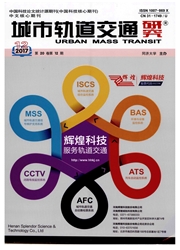

 中文摘要:
中文摘要:
采用2种不同刚度的扣件,对地铁振动传播途径各主要部位进行了振动测试,获得了各部位相应的振动加速度时程数据。首先,统计了时域振动加速度峰值及其变化情况;然后,通过傅里叶变换计算了各部位振动的频谱,对比分析了振动在传播过程的频谱变化规律;最后,计算分析了地表Z振级变化。结果表明,扣件刚度在一定范围内变化,对60 Hz附近的振动峰值影响有限,隧道壁和地表的竖向及横向振动振级分别在650 Hz和340 Hz附近迅速下降,之后趋于平缓。使用刚度较小的扣件有利于减小地表竖向振动,但不利于减小地面横向振动。
 英文摘要:
英文摘要:
By adopting two metro fastenings with different rigidities, the vibration of each major part of transmission (rail, track bed, tunnel wall and ground surface) are tested, the time-histories data are collected. Firstly, the vibration acceleration peaks of time domain and its changes are summarized; then the vibration acceleration spectrums of each part are calculated by Fourier transform, the changes of spectrums in the process of vibration transmission are analyzed. The Z vibration levels of ground surface are calcu- lated. The results show that the fastening rigidity differing in a certain range has a limited influence to 60Hz vibration peak value, the vertical and horizontal vibration levels of tunnel wall and ground surface decrease rapidly at 650Hz and 340Hz respectively, and remain on steady levels after- ward. So the metro fastenings with low rigidity could re- duce the surface vertical vibration, but not the horizontal vibration.
 同期刊论文项目
同期刊论文项目
 同项目期刊论文
同项目期刊论文
 期刊信息
期刊信息
